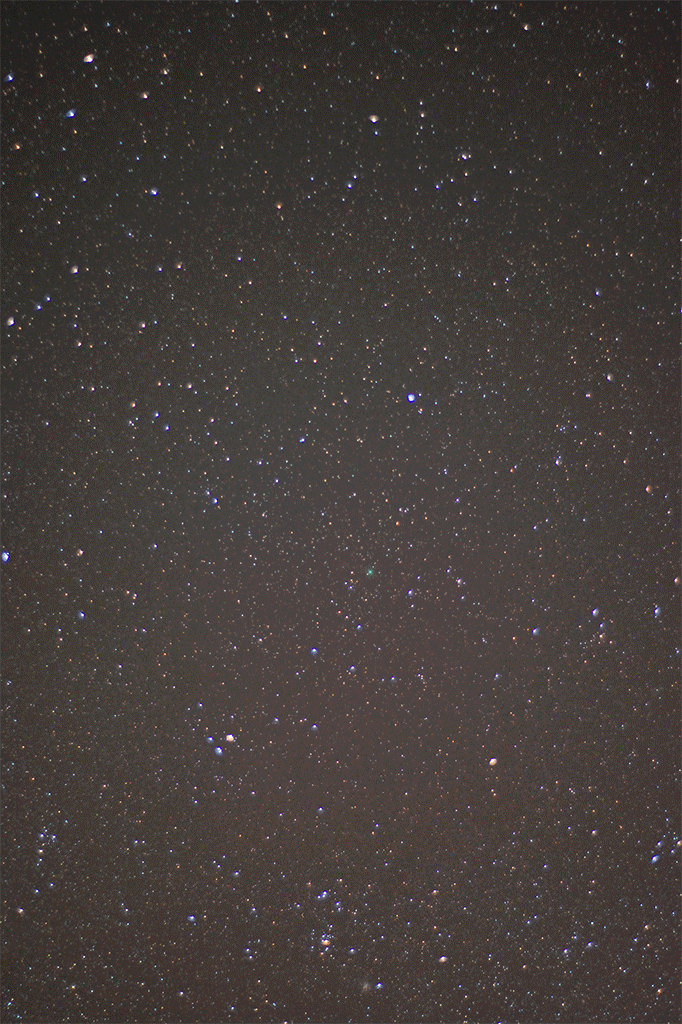I trek out to a fairly dark sky site on the odd Friday evening to partake of some amateur astronomy at an observatory in the Dandenong ranges.
![]() A few weeks ago, we decided to have a go at locating what was then a fairly dim object, C/2014 Q2. We found it with binoculars and in a relatively small (10") telescope. I'd just gotten a tripod-mounted motor drive for my DSLR, so of course we decided to have a go at imaging the comet.
A few weeks ago, we decided to have a go at locating what was then a fairly dim object, C/2014 Q2. We found it with binoculars and in a relatively small (10") telescope. I'd just gotten a tripod-mounted motor drive for my DSLR, so of course we decided to have a go at imaging the comet.
I don't really have a great zoom lens (although), so instead I decided on the 50mm f/1.8 lens. That lets in a lot of light, which is handy when you try to photograph dim objects in a dark night sky and you need to find them in the viewfinder :-) Even with its wide angle though, you still need a motor drive to avoid stars turning unto lines ony any exposure longer than about 10 seconds.
This past weekend it was nice and clear and so I went back to the observatory, where I was able to take another photo of the comet.
And with two photos of an objects that moves across the sky fairly fast, it's of course time for an animation! I've annotated the brightest stars and a few open clusters down the bottom of the image.
I used GIMP to process the levels and colour balance for both images, so they approximately matched (the moon was out when the first image was taken on Dec 12) and then to rotate and stretch the second image to align with the first one. It's not perfect, but it'll do I think.
In fact, there are a few multi-pixel size blotches that seem to be present in one image and not the other, as well as some that move by more than the half-pixel or so that image alignment is out by.
Some are likely artefacts and noise, but I can't help but wonder if some are asteroids. I've checked against the ten or so thousand largest and/or most visible asteroids, but none of them are anywhere near.
I suppose I should get a third image in another week or two... to be continued?


Add new comment